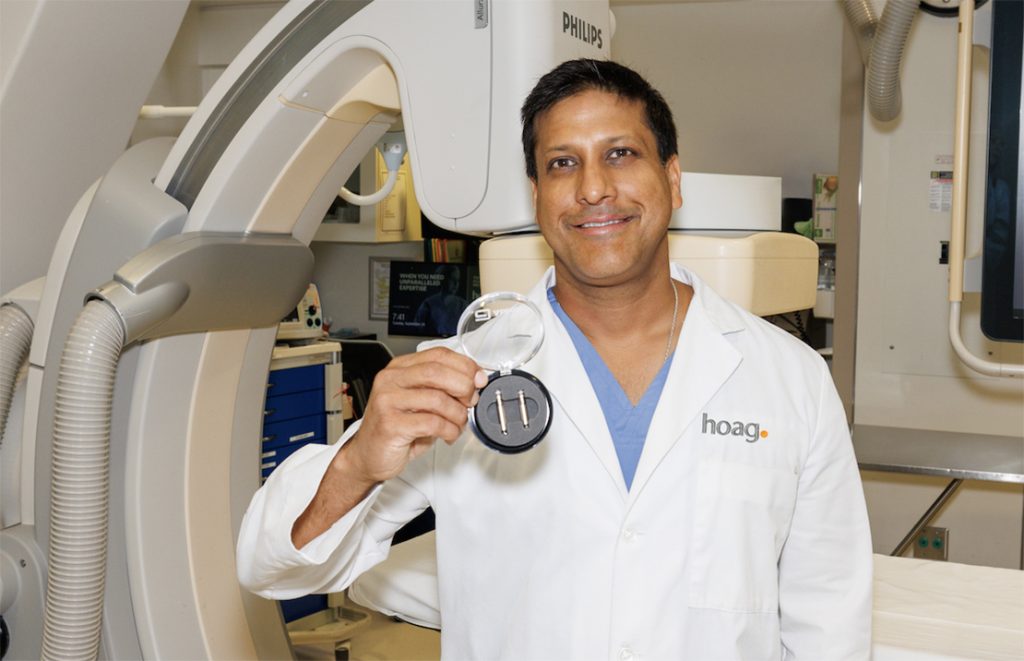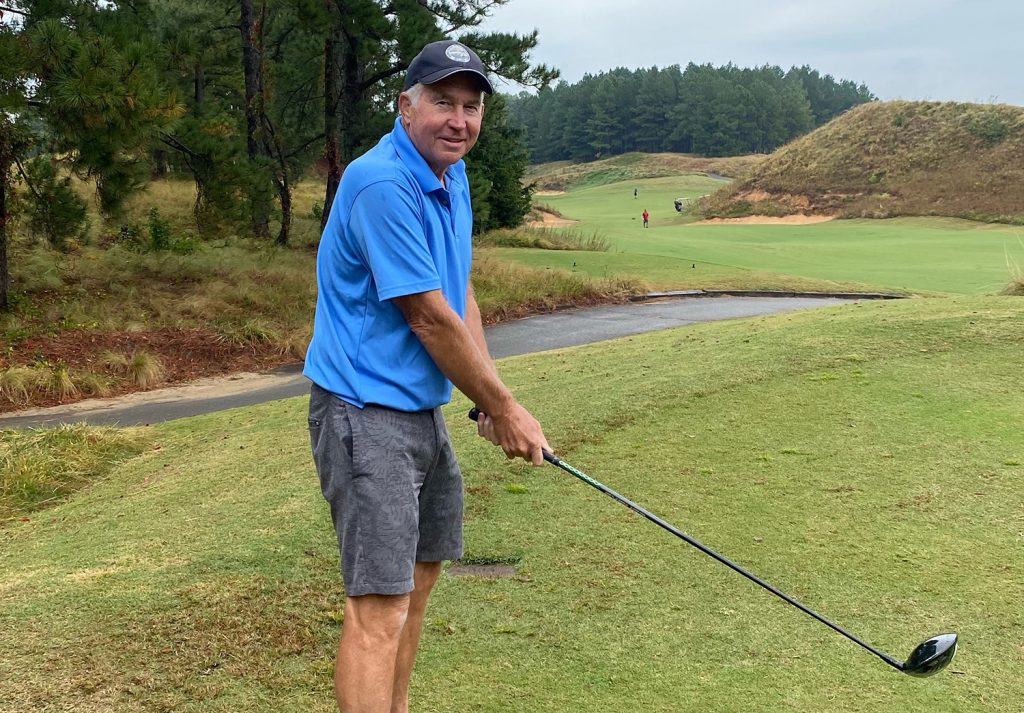
Hoag Memorial Hospital Presbyterian in Newport Beach announced the successful implant of the world’s first dual chamber leadless pacemaker in a patient. The minimally invasive surgery was a success and marks a new era in cardiac care.
The FDA recently approved the AVEIR DR, the world’s first dual chamber leadless pacemaker system by Abbott. Hoag is one of a few initial sites in the nation to participate in the launch of this remarkable technology.
“This advanced technology is a game-changer for cardiac patients. It is an exciting opportunity to provide our patients with access to groundbreaking technology as soon as it becomes widely available,” said Hoag clinical cardiac electrophysiologist Rajesh Banker, M.D., who performed the surgery and served as the principal investigator in a trial of the pacemaker at Hoag. “I am proud to work at a hospital that supports specialists like me with the resources to conduct leading-edge research and to offer cutting-edge technology that advances medicine and improves patient care.”
Smaller than an AAA battery, the pacemaker provides consistent atrioventricular synchrony, the coordinated contraction of the atria and ventricles of the heart that allow for proper heart function. Nearly 80 percent of people who need a pacemaker require pacing in two chambers of the heart (the right atrium and right ventricle). Through first-of-its-kind i2i (implant to implant) technology, AVEIR DR solves a significant engineering challenge by offering beat-to-beat communication between the two leadless pacemakers in both chambers of the heart.
Hoag is one of a few initial sites in the nation to offer this technology which speaks to the hospital’s national reputation.
“Hoag’s ‘privademic’ focus continues to attract the nation’s brightest minds and most promising technology,” said Robert T. Braithwaite, President and CEO of Hoag. “Offering the new pacemaker at Hoag gives Orange County patients extraordinary access to this revolutionary technology.”

In an earlier clinical trial, an average atrioventricular synchrony of at least 95 percent was achieved in patients across various postures and activity levels, recreating the beat-to-beat synchronization between two pacemakers that occurs naturally in the heart. This was true no matter what the patients did: lie down, sit up and walk quickly.
“This technology expands access to the benefits of leadless pacemakers to far more people than ever before,” said Dr. Banker, who performed all nine of the surgeries conducted at Hoag in the clinical trial stage. “It also expands our abilities as clinicians to treat people with slow or abnormal heart rhythms.”
Dr. Banker said he was pleased when the FDA approved the device and is excited that more people will now have access to this technology. In fact, patients who would benefit from a leadless dual chamber pacemaker, will now be able to replace their existing pacemakers with the new technology once their pacemakers approach depletion.
What they will find, Dr. Banker said, is a safer, more personalized pacemaker than they’ve had in the past without the risk of lead complication or pocket infection.
“By eliminating transvenous leads and generator pockets, this technology reduces the long-term risk of infection and lead malfunction that affects one in six patients who have standard dual chamber pacemakers,” Dr. Banker said. “Also, the new pacemaker allows for a tailored, patient-centric approach. For example, a person may only need an atrial or ventricular device at first. We can then upgrade over time, to meet that individual’s evolving needs.”
For more information, visit www.hoag.org.




